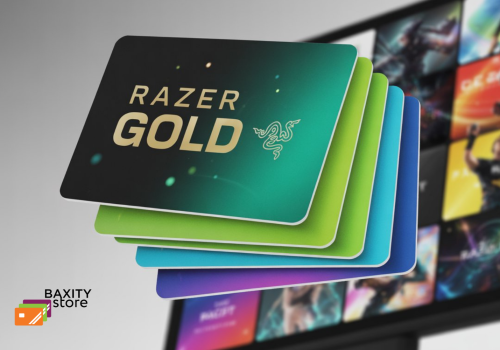In recent years, the world has witnessed an unprecedented surge in interest surrounding cryptocurrencies. Once a niche topic for tech enthusiasts, digital assets like Bitcoin, Ethereum, and XRP have rapidly moved into mainstream consciousness, driven by their potential to revolutionize finance, enhance security, and offer new avenues for investment and daily transactions.
Beyond speculative trading, cryptocurrencies are finding practical applications in various sectors, from facilitating faster and cheaper cross-border payments to powering decentralized finance (DeFi) platforms and enabling new forms of digital ownership. This growing adoption highlights a fundamental shift in how we perceive and interact with money.
Understanding the Basics: XRP, Mastercard, and the Bridge
What is XRP?
XRP is a digital asset that operates on the XRP Ledger, an open-source blockchain. It was created by Ripple Labs with the primary purpose of facilitating fast, low-cost international payments.
Unlike many other cryptocurrencies that rely on mining, XRP uses a unique consensus protocol to validate transactions, allowing for near-instantaneous settlements (typically 3-5 seconds) and significantly lower fees compared to traditional banking systems. This makes it particularly useful as a “bridge currency” for financial institutions and payment providers to efficiently move value across borders and convert between different fiat currencies.
What is Mastercard?
Mastercard is a global financial technology company that operates one of the world’s largest payment processing networks. It acts as an intermediary, facilitating electronic fund transfers between consumers, merchants, and financial institutions.
Its primary role in everyday transactions is to provide the infrastructure and technology that allows you to use your debit, credit, or prepaid card to make purchases securely and efficiently almost anywhere in the world. When you swipe, tap, or enter your Mastercard details, the network ensures that your bank can communicate with the merchant’s bank to authorize and settle the transaction, making everyday commerce seamless.

The “Bridge” Concept
A direct top-up of a Mastercard with XRP isn’t typically possible because cryptocurrencies like XRP operate on decentralized blockchain networks, while Mastercard functions within a traditional, centralized fiat currency system. They speak different “languages.”
To bridge this gap, intermediaries are essential. These intermediaries, such as crypto exchanges, specialized crypto-friendly platforms, or services like Baxity Store that offer Mastercard gift cards purchasable with cryptocurrency, act as translators. They convert your XRP into a fiat currency (like USD or EUR) that Mastercard can process, or provide a Mastercard product that is pre-loaded using your crypto. This conversion or direct purchase through a crypto-accepting vendor is the “bridge” that enables your digital assets to be spent in the traditional financial world.
📚 Related Articles
Connecting Digital Currencies to Everyday Spending
The increasing need to bridge the gap between digital assets like XRP and traditional financial systems like Mastercard stems from several key factors, primarily driven by the inherent advantages of blockchain technology and the evolving demands of a globalized, digital economy.
Here’s a breakdown of why this bridge is becoming increasingly crucial:
Efficiency and Speed
Traditional financial systems, especially for cross-border payments, often involve multiple intermediaries (correspondent banks, clearing houses), leading to slower transaction times (days) and higher fees. Digital assets like XRP, built on blockchain technology, can facilitate near-instantaneous settlements (seconds) and significantly lower transaction costs by cutting out these intermediaries. Bridging this gap allows the speed and cost-effectiveness of crypto to benefit everyday transactions.
Global Accessibility and Financial Inclusion
While traditional banking services are not universally accessible, cryptocurrencies can be accessed by anyone with an internet connection and a compatible device. This opens up financial services to the “unbanked” or “underbanked” populations globally, particularly in regions where traditional banking infrastructure is limited. Bridging allows these individuals to participate in the wider financial ecosystem.
Transparency and Security
Blockchain technology offers a transparent and immutable ledger for transactions, which can enhance trust and reduce fraud compared to opaque traditional systems. While traditional finance has its own robust security measures, the decentralized nature of crypto can offer different layers of security. Integrating these systems can leverage the best of both worlds.
Liquidity and Interoperability
Digital assets can provide on-demand liquidity, meaning financial institutions don’t need to pre-fund accounts in various currencies across the globe. XRP, specifically, is designed as a “bridge currency” to facilitate seamless conversion between different fiat currencies and digital assets. This interoperability is vital for a truly global and efficient financial network.
Evolving Consumer and Business Demands
As more individuals and businesses become familiar with and invest in cryptocurrencies, there’s a growing demand to use these digital assets for everyday purchases and services, not just as speculative investments. Bridging the gap with traditional payment networks like Mastercard allows for this practical utility, enabling users to spend their crypto holdings wherever cards are accepted.
Innovation and New Financial Products
The integration of digital assets encourages innovation in financial services, leading to new products like crypto-linked debit cards, tokenized assets, and decentralized finance (DeFi) applications that offer unique benefits like yield generation or novel lending models. Bridging allows these innovations to reach a broader audience and integrate with existing financial infrastructure.
It’s crucial to understand that cryptocurrencies are highly volatile assets, meaning their prices can fluctuate dramatically and unpredictably in short periods. This volatility presents both opportunities for significant gains and risks of substantial losses.
Therefore, conducting thorough due diligence is paramount. This involves researching the cryptocurrency itself, the platforms you use (exchanges, wallets, and services like Baxity Store), understanding associated fees, security measures, and any regulatory or tax implications in your region. Always ensure you only invest or transact with funds you can afford to lose.
Step-by-Step Guide: Topping Up Your Mastercard with XRP (General Method)
Step 1: Choose a Suitable Crypto Exchange/Platform
Choosing the right crypto exchange or platform is fundamental to a smooth and secure experience when dealing with cryptocurrencies, especially when you plan to convert them to fiat or use them for real-world transactions. Here’s a breakdown of what to consider:
Supported Cryptocurrencies and Fiat Currencies
The most obvious first step is to ensure the exchange supports XRP. Beyond that, if your goal is to convert to fiat, check which fiat currencies it supports for withdrawals (e.g., USD, EUR, GBP) and if those align with your banking region. Some platforms might specialize in certain regions or offer better rates for specific currency pairs.
Withdrawal Options and Limits
Verify that the exchange allows withdrawals to bank accounts or offers direct card top-up features. Pay close attention to the withdrawal methods available (e.g., bank transfer, wire transfer, direct card push) and any associated minimums, maximums, and processing times. These can vary significantly between platforms.
Fees
Fees can eat into your funds, so it’s vital to understand the fee structure. Look for:
- Trading Fees: These are charged when you buy or sell crypto (maker/taker fees).
- Deposit Fees: Some exchanges charge for depositing fiat or crypto.
- Withdrawal Fees: These are charged when you move crypto out of the exchange or withdraw fiat to your bank account.
- Network Fees (Gas Fees): While not directly charged by the exchange, these are inherent to blockchain transactions and can affect the final cost, especially for certain cryptocurrencies.
Speed
Consider how quickly transactions are processed. While crypto transactions themselves can be fast, the time it takes for an exchange to process deposits, execute trades, and complete fiat withdrawals can vary. If you need quick access to funds, look for platforms known for their efficiency.
User Reviews and Reputation
This is a critical factor for security and reliability. Research the exchange’s history, look for user reviews on independent platforms, and check for any reported security breaches or customer service issues. A strong reputation for security and responsive customer support is paramount.
Security Measures
Beyond reputation, delve into the specific security protocols the exchange employs. Look for:
- Two-Factor Authentication (2FA): Essential for account security.
- Cold Storage: Where the majority of user funds are held offline, making them less vulnerable to online hacks.
- Insurance: Some exchanges offer insurance on user funds, providing an extra layer of protection.
- Regulatory Compliance: Exchanges that are regulated in your jurisdiction (e.g., registered with financial authorities, adhere to KYC/AML policies) often offer greater consumer protection and legitimacy.
User Interface (UI) and Experience (UX)
Especially for beginners, a user-friendly interface can make a big difference. An intuitive design and clear navigation can simplify the process of buying, selling, and withdrawing funds.
By carefully evaluating these factors, you can select a crypto exchange or platform that best suits your needs for converting XRP to a usable form for your Mastercard.
Step 2: Transfer XRP to the Chosen Exchange
Once you’ve selected your crypto exchange, the next crucial step is to transfer your XRP from your personal wallet (e.g., a hardware wallet, software wallet, or another exchange) to your designated XRP wallet on the chosen exchange.
- Locate Your Exchange’s XRP Deposit Address:
– Log in to your chosen crypto exchange account.
– Navigate to the “Deposit” or “Receive” section.
– Select XRP from the list of cryptocurrencies.
– The exchange will display a unique XRP wallet address. This is where you need to send your XRP. - Identify the Destination Tag/Memo (CRUCIAL!):
– This is arguably the most critical part of sending XRP to an exchange. Many centralized exchanges use a single XRP wallet address for multiple users. To distinguish your deposit from others and ensure it’s credited to your specific account, they require a Destination Tag (also sometimes called a Memo).
– This tag is typically a series of numbers that acts as a unique identifier for your account on that exchange.
– Always copy both the XRP wallet address AND the Destination Tag/Memo provided by your exchange. If you send XRP to an exchange without including the correct Destination Tag/Memo when it’s required, your funds may be lost and potentially unrecoverable.
– If the exchange does not provide a Destination Tag/Memo, it means it’s not required for that specific address (often the case for personal, non-custodial wallets). However, for exchanges, it’s almost always necessary. - Initiate the Transfer from Your Personal Wallet:
– Open your personal XRP wallet or the platform where your XRP is currently stored.
– Select the “Send” or “Withdraw” option for XRP.
– Carefully paste the XRP wallet address copied from your exchange into the recipient address field.
– Double-check every character.
– Carefully paste the Destination Tag/Memo (if required by the exchange) into the designated tag/memo field. Again, double-check for accuracy.
– Enter the amount of XRP you wish to transfer.
– Review all transaction details (address, tag, amount, and any network fees) one final time before confirming. - Confirm the Transaction:
– Your wallet will likely ask for a final confirmation, possibly requiring a password, PIN, or hardware wallet confirmation.
– Once confirmed, the transaction will be broadcast to the XRP Ledger. It usually settles very quickly (within a few seconds).
– You can typically monitor the transaction status on your exchange’s deposit history or using a public XRP Ledger explorer by searching for your transaction ID.Step
Step 3: Sell XRP for Fiat Currency
Once your XRP has arrived in your exchange wallet, you’re ready to convert it into a traditional currency (fiat) like USD or EUR. This process involves placing a “sell order” on the exchange.
1. Navigate to the Trading Section:
On most exchanges, you’ll find a “Trade,” “Markets,” or “Convert” section. Look for the XRP trading pair with your desired fiat currency (e.g., XRP/USD, XRP/EUR).
2. Choose Your Order Type: Market Order vs. Limit Order
Crypto exchanges typically offer different order types to give you control over how your trade is executed. The two most common are:
Market Order:
- What it is: A market order is an instruction to buy or sell a cryptocurrency immediately at the best available current market price. It prioritizes speed of execution over a specific price.
- When to use it: Use a market order when you want your transaction to go through instantly, and you are willing to accept the prevailing market price. This is often suitable for beginners or when the market is highly liquid and you need to react quickly to price movements.
- How it works: When you place a market sell order for XRP, the exchange will automatically match your order with the highest available buy orders on its order book until your entire amount is sold.
- Consideration: Be aware of “slippage,” especially in volatile or less liquid markets. Slippage occurs when the price changes between the time you place your order and when it’s fully executed, potentially resulting in a slightly different (and less favorable) average price than what you saw when you clicked “sell.”
Limit Order:
- What it is: A limit order allows you to set a specific price at which you want to sell your XRP. Your order will only be executed if the market price reaches your specified limit price or higher.
- When to use it: Use a limit order when you have a target price in mind and are not in a rush to sell. This gives you more control over the execution price and can help you secure a better rate.
- How it works: When you place a limit sell order for XRP, your order is placed on the exchange’s order book and waits until a buyer is willing to purchase your XRP at your specified price or above. If the market price never reaches your limit, your order will not be filled.
- Consideration: There’s no guarantee your limit order will be filled. If the market moves away from your desired price, your order might remain open indefinitely until you cancel it.
3. Enter the Sell Details:
- Select “Sell” (or “XRP to [Fiat Currency]”).
- Enter the amount of XRP you wish to sell.
- If using a limit order, input your desired sell price per XRP.
- The exchange will usually show you an estimated amount of fiat currency you will receive, along with any associated trading fees.
4. Execute the Trade:
- Review all the details carefully, then confirm the sell order.
- If it’s a market order, the sale should execute almost instantly. If it’s a limit order, it will remain open until your specified price is met.
- Once the order is completed, the fiat currency will be credited to your fiat balance on the exchange.
Topping Up via Baxity Store
Baxity Store is an online platform that specializes in selling prepaid cards and e-vouchers, including various Mastercard prepaid card denominations. Its role in the context of topping up a Mastercard with XRP is to provide a convenient and secure bridge between cryptocurrencies and traditional fiat-based payment methods.
Benefits of Topping Up Mastercard with XRP via Baxity Store
Here’s why it’s highlighted for convenience and security:
- Convenience: Baxity Store simplifies the process by allowing users to directly purchase Mastercard prepaid cards using cryptocurrencies. This eliminates the need for multiple steps often involved in traditional crypto-to-fiat conversions, such as transferring XRP to an exchange, selling it for fiat, withdrawing to a bank account, and then topping up a card. Instead, you can buy a ready-to-use Mastercard with your crypto in a more streamlined fashion.
- Security: Reputable platforms like Baxity Store employ advanced security protocols and encryption for transactions, aiming to protect user data and funds. While direct crypto transactions always carry inherent risks, using a trusted platform for purchasing a prepaid card can provide a more secure pathway than navigating less regulated or less transparent methods. It also often provides instant delivery of the card details upon successful payment, reducing exposure time.
Step-by-Step Guide: Topping Up Your Mastercard with XRP
- Step 1: Navigate to the Baxity Store website. Choose the desired Mastercard prepaid card denomination.
- Step 2: Add the Mastercard to your cart. During checkout, select “Cryptocurrency” as your payment method.
- Step 3: Follow the instructions to send the required amount of XRP to the provided Baxity wallet address. Double-check the address and any necessary memo/destination tag.
- Step 4: Upon successful payment, receive the Mastercard details instantly on account or via email.
- Step 5: Follow the activation instructions provided by Baxity here. Your Mastercard is now topped up and ready for use.
Conclusion
In this guide, we’ve explored two primary methods for leveraging your XRP to top up a Mastercard. The first involves utilizing a crypto exchange to convert your XRP into fiat currency, which can then be withdrawn to a bank account linked to your Mastercard. The second, more direct approach, is through platforms like Baxity Store, where you can purchase Mastercard prepaid cards using various cryptocurrencies, including XRP, Bitcoin, Tether (USDT), Litecoin, and Tron.
The integration of cryptocurrencies and traditional financial systems is an ongoing and rapidly evolving landscape. We can expect to see more seamless solutions emerge as technology advances and regulatory clarity improves, further blurring the lines between digital assets and everyday spending.
Regardless of the method chosen, always prioritize thorough research and due diligence. Understand the platforms you’re using, be aware of all associated fees, and acknowledge the inherent volatility of cryptocurrencies. Starting with small amounts is a prudent strategy to familiarize yourself with the process and mitigate potential risks.





